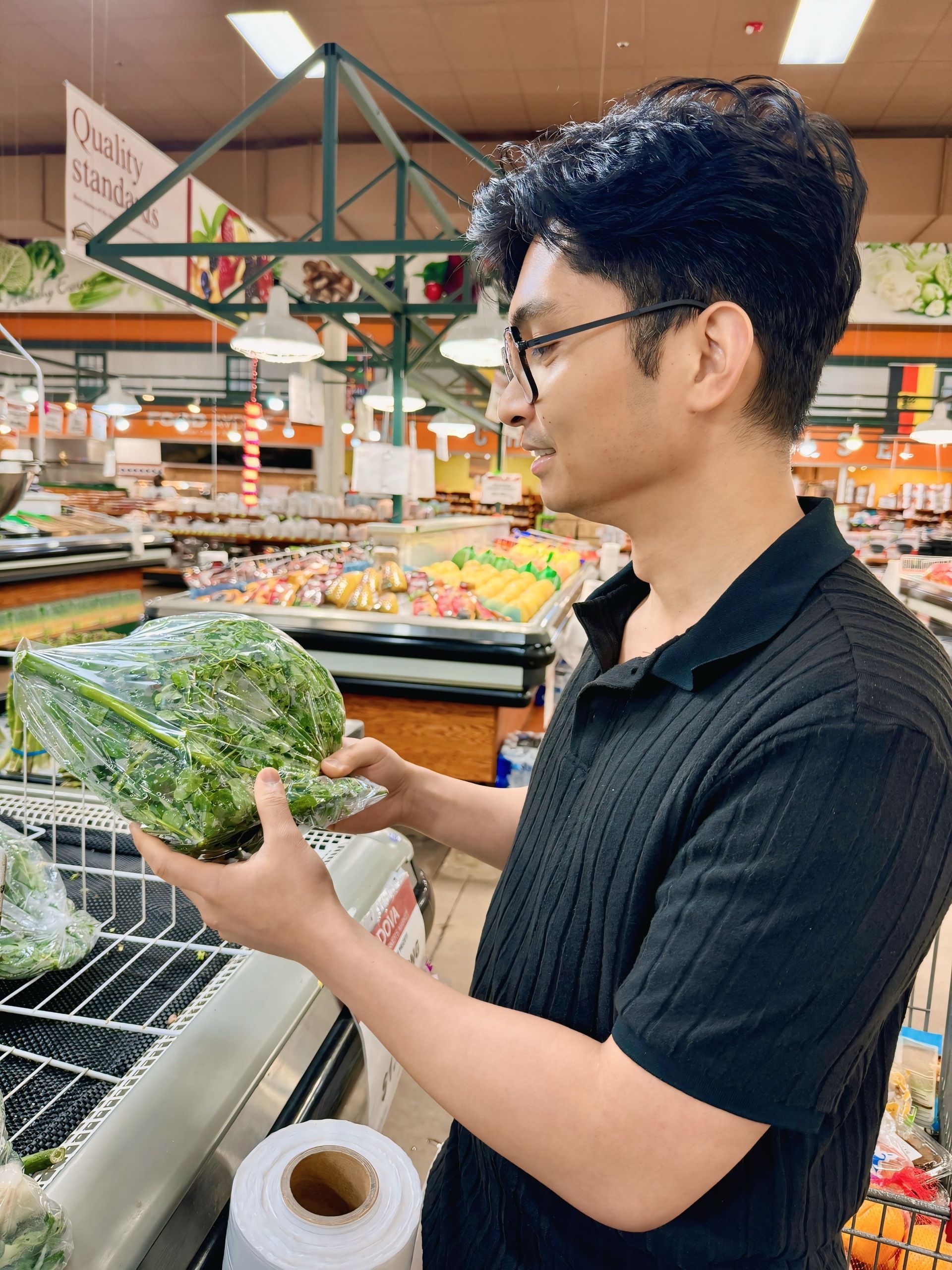Stop trying to eat perfect. Start eating smart.
Look, I'm a busy professional just like you.
I have patients to see, content to create and a baby coming in a few months - the last thing I want is to spend my limited free time decoding food labels like I'm preparing for a chemistry exam.
11 years in healthcare and my own thyroid cancer taught me that the difference between foods that fuel your goals and foods that sabotage them isn't complicated.
You just need to know the core principles that actually move the needle.
My husband and I do most of our shopping around the perimeter of the grocery store. Whole foods like produce, minimally processed items, things that don't even need labels most of the time.

My husband loves moringa leaves - we call it “malunggay” in the Philippines
But real life happens.
Sometimes you need something from the aisles—whether it's crackers for a work lunch, pasta for a quick dinner, or granola bars for travel. That's when knowing how to read labels becomes your superpower.
While everyone else is getting overwhelmed by 20-ingredient lists, I use a minimalist approach that takes 60 seconds max.
Why Food Labels Matter for High Achievers
Research shows that people who read food labels consistently eat better—less sugar, less sodium, more fiber, and more nutrients. This translates to:
More sustained energy throughout your busy days
Better focus during those important meetings or study sessions
Long-term health protection from chronic diseases
The best part? Once you master this skill, healthy choices become automatic—even when you're exhausted, traveling, or rushing between commitments.
The 3-3-3 Quick Scan Method
When you're in a hurry (which is probably most of the time), use this system: 3 seconds on serving size, 3 seconds on key nutrients, 3 seconds on ingredients. This breaks down into three quick steps:
First 3 Seconds: Check the Serving Size
This is at the top of the Nutrition Facts panel
Reality check: Is this actually how much you'll eat?
If you're meal prepping or buying lunch, you might eat the whole package
All other numbers are based on this amount—if you eat double, double everything
Second 3 Seconds: Scan for Red Flags
Added sugars: >10g per serving is high (your morning shouldn't start with a sugar crash)
Sodium: >20% Daily Value means it's high (hello, afternoon bloating)
Saturated fat: >20% Daily Value is high
Trans fat: Any amount is too much—keep looking
Pro tip: Use the %Daily Value as your shortcut. 5% or less = low, 20% or more = high.
Third 3 Seconds: Ingredient Speed Check
First 3 ingredients make up most of the product
Red flags: Sugar in the first 3 ingredients
Green flags: Whole foods, short ingredient lists

Source: FDA.gov
🚦My Green Light, Yellow Light, Red Light System
🟢 Green Light Foods (Buy with confidence)
<10g added sugar per serving
<20% Daily Value sodium
<20% Daily Value saturated fat
>3g fiber per serving
First ingredient is a whole food
Short, recognizable ingredient lists
🟡 Yellow Light Foods (Proceed with caution)
Moderate amounts of sugar/sodium but other good qualities
Longer ingredient lists but mostly real foods
Good for occasional use when convenience matters
🔴 Red Light Foods (Think twice)
Sugar in first 3 ingredients
20% Daily Value sodium
20% Daily Value saturated fat
Trans fats
Common Rookie Mistakes (That I See All the Time)
Mistake 1: Falling for Front-of-Package Marketing
Words like "natural," "multigrain," or "made with real fruit" don't automatically mean healthy. Always flip to the Nutrition Facts panel.
Mistake 2: Ignoring Serving Sizes
That "healthy" smoothie might look perfect until you realize it's 2.5 servings and has 60g of sugar total.
Mistake 3: Perfect vs. Progress Mindset
You don't need to find the perfect food—especially when you're tired and rushed. Good enough choices consistently beat perfect choices occasionally.
Mistake 4: Not Planning for Your Actual Lifestyle
If you travel for work, stock up on shelf-stable options. If you meal prep, buy in quantities that make sense. If you're a night owl, don't pretend you'll prep fresh breakfast every morning.
Quick Decision Framework for Different Goals
When You Need Sustained Energy:
Look for fiber + protein combinations
Limit products where sugar is in the first 3 ingredients
Choose whole grains over refined
When You're Meal Prepping:
Focus on versatile ingredients with good nutrient density
Choose items that store well and maintain quality
Stock up on frozen vegetables (just as nutritious as fresh)
When You're Traveling/Eating Out:
Damage control mode: Choose options with vegetables, limit fried foods
Hotel shopping: Nuts, fruit, yogurt, whole grain crackers
Remember: One imperfect meal won't derail your progress
Your Health = Your Competitive Advantage
Reading labels builds the energy and mental clarity you need to achieve your bigger goals. When you can quickly identify quality foods, you're solving the "what should I eat" question once and for all.
Your 60-second action plan:
Master the 3-3-3 method this week
Use it on 3 products during your next grocery run
Notice how much easier decisions become with practice
Small, consistent choices compound.
If you want to dive deeper on how to read food labels as a tool to make better food choices, check the FDA education resource for this topic.
Questions about a specific product or situation? Hit reply—I actually read these emails and enjoy helping readers navigate real-world food choices.
Your ambitious goals deserve a body that can keep up.
Start with your next grocery trip.
Talk soon,
Grazelle 🌱

